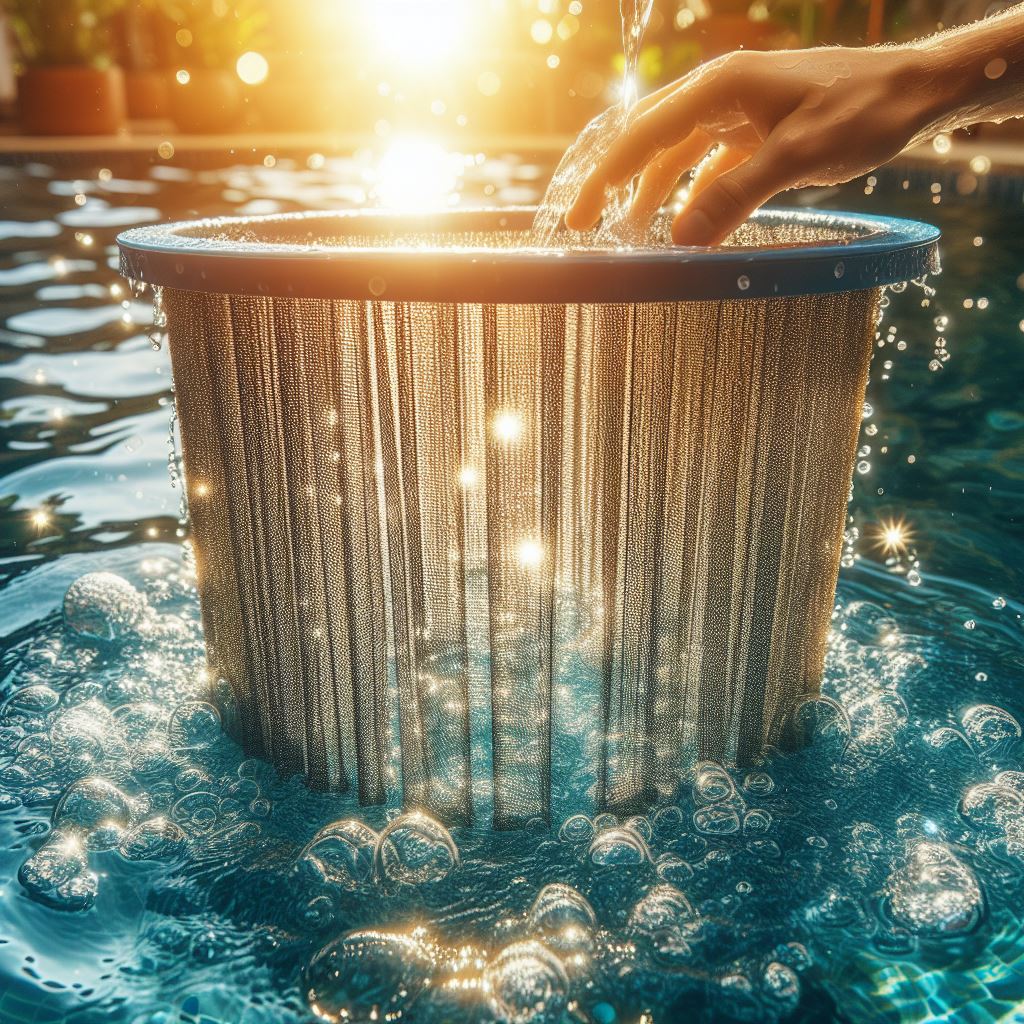A well-functioning sand filter is essential for maintaining clear and clean pool water. However, the corrosion of pool sand filters due to exposure to pool water can impact their efficiency and longevity. In this comprehensive guide, we will explore the causes of pool water corrosion on sand filters and provide effective methods for treatment and prevention.

Understanding Pool Water Corrosion
Pool water corrosion occurs when the chemical composition of the pool water reacts with the materials of the sand filter. This process can lead to degradation, erosion, and other forms of damage that compromise the filter’s performance.
Causes of Corrosion
Several factors contribute to pool water corrosion of sand filters:
pH Imbalance: A significant factor is an imbalance in the pH levels of the pool water. High acidity or alkalinity can accelerate corrosion. Monitoring and maintaining the pH within the recommended range is crucial.
High Calcium Hardness: Elevated levels of calcium hardness in pool water can contribute to corrosion. Regular testing and appropriate adjustments to calcium hardness levels are essential.
Chlorine Concentrations: Excessive chlorine concentrations can lead to corrosive effects on filter components. Maintaining proper chlorine levels is essential for effective sanitization without causing damage.
Mineral Content: The presence of minerals, such as iron and copper, can contribute to corrosion. Regular water testing and the use of sequestrants can help control mineral content.
Signs of Corrosion
Identifying signs of corrosion early is crucial for prompt intervention. Common indicators include:
Rust or Discoloration: Visible rust or discoloration on the filter tank or components.
Reduced Efficiency: Decreased filtration efficiency and water clarity.
Leakage: Water leaks around filter connections or damaged areas.
Treatment Methods
Addressing pool water corrosion involves a combination of corrective actions:
pH Adjustment: Regularly test and adjust the pH levels of the pool water. Keeping the pH within the recommended range (7.2-7.8) helps prevent corrosive conditions.
Calcium Hardness Adjustment: Monitor calcium hardness levels and adjust as needed to prevent excessive hardness, which can contribute to corrosion.
Chlorine Management: Maintain chlorine levels within the recommended range. Avoid over-chlorination, as it can contribute to corrosion. Consider using alternative sanitization methods if necessary.
Mineral Sequestration: Use sequestrants to control the mineral content in the pool water, especially if iron or copper is present. Sequestrants bind with minerals, preventing them from causing corrosion.
Anti-Corrosion Coatings: Consider applying anti-corrosion coatings to filter components. These coatings create a protective barrier, reducing the likelihood of corrosion.
Regular Inspections: Conduct regular visual inspections of the filter tank and components. Identify and address any signs of corrosion promptly to prevent further damage.
Professional Assessment: If corrosion is extensive or persistent, consult with pool maintenance professionals. They can conduct a thorough assessment and recommend targeted solutions.
Preventive Measures
Proactive measures can help prevent pool water corrosion:
Routine Water Testing: Implement a regular water testing schedule to monitor pH, calcium hardness, and chlorine levels. Adjust as needed to maintain optimal conditions.
Regular Maintenance: Perform routine maintenance on the sand filter, including backwashing and cleaning. This helps prevent the buildup of corrosive substances.
Use Quality Materials: When replacing filter components, choose high-quality materials that are resistant to corrosion. Stainless steel or corrosion-resistant alloys may be suitable alternatives.
Install Sacrificial Anodes: Sacrificial anodes can be added to the filter system. These sacrificial components attract corrosion, protecting vital parts of the filter.
Corrosion Inhibitors: Consider adding corrosion inhibitors to the pool water. These chemicals form a protective layer on metal surfaces, reducing the risk of corrosion.
Educate Pool Users: Educate pool users on proper pool water maintenance practices. Encourage them to shower before swimming and avoid introducing contaminants that can contribute to corrosion.
Environmental Considerations
Local environmental conditions, such as temperature, humidity, and the presence of airborne pollutants, can influence pool water corrosion. Consider these factors when implementing preventive measures and treatment strategies.
Documentation and Record-Keeping
Maintain records of water test results, maintenance activities, and any interventions taken to address corrosion. This documentation can provide valuable insights into the effectiveness of preventive measures over time.
Collaboration with Professionals
Establish a collaborative relationship with pool maintenance professionals. Regularly consult with experts to assess the condition of the sand filter and receive guidance on optimizing its performance.
Conclusion
Effectively addressing pool water corrosion of sand filters requires a multi-faceted approach, including routine testing, corrective actions, preventive measures, and collaboration with pool professionals. By understanding the causes of corrosion, implementing proactive strategies, and promptly addressing signs of damage, pool owners can maintain a durable and efficient sand filtration system, ensuring crystal-clear and safe swimming pool water for all.
